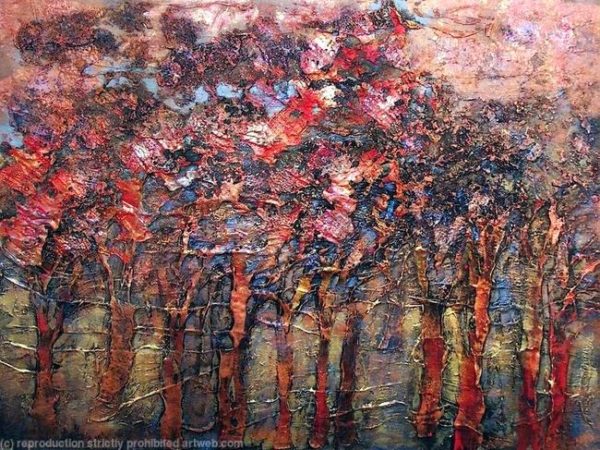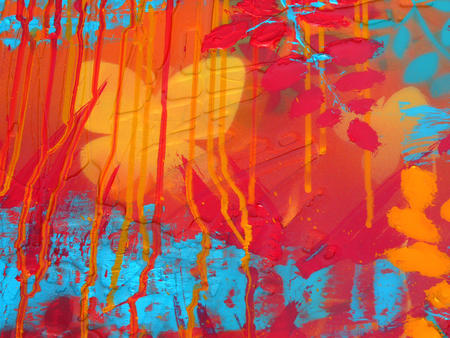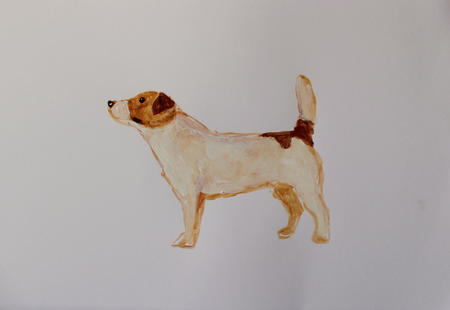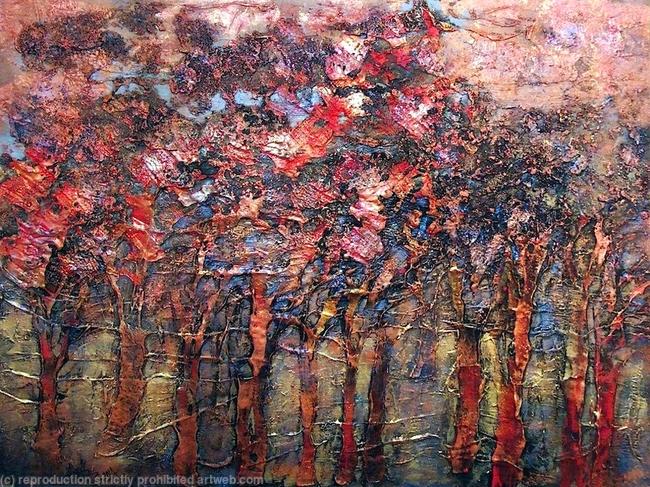While the appeal of acrylic painting may seem at first to be largely attributable to its immediacy, it is also a form of painting that offers a wealth of possibilities for experimentation.
The following five techniques help to demonstrate this, and can be highly rewarding for novice and seasoned acrylic painters alike.
Impasto
You might largely associate the process of impasto — that of applying thick and heavy strokes of paint — with oil painting. However, it can also be very relevant to acrylic paint, not least because, like oils, acrylic enables you to easily achieve an ‘impasto’ effect straight out of the tube.

Indeed, with acrylic, all that you really need to do is add a gel medium or modelling paste, in order to make the paint as thick as you like.
This is difficult to do with oil paint, given that it dries slowly and can only be thickened to a certain degree without its visual appeal being harmed.
Glaze
If the impasto technique is as thick a paint application as acrylic gets, applying a glaze is the opposite. Basically, a glaze is a thin layer of paint that is highly translucent, thereby allowing some of the colour underneath to show through. In the process, the underlying colour is subtly transformed.

The glazing technique, then, simply involves mixing medium with transparent pigment, and applying this over a dried underpainting. To the viewer’s eye, the colour of the underpainting will blend with that of the transparent glaze.
However, as the underpainting has already dried, the two won’t be literally mixed. As a result, an optical effect will be created akin to a transparent-coloured window having been placed on top of the underpainting.
Scumbling
‘Scumbling’ is a bit of a vague term, but it can be basically described as the practice of adding a layer of broken, scratchy or speckled colour over another colour. This enables bits of the lower layer of painting to show through the scumbling.
One way to think of scumbling, is that it allows for a certain degree of transparency — like a glaze — but also an exuberant spontaneity akin to impasto.
If you love visible brushwork, texture and layering in a painting, you’ll therefore probably love scumbling, which is typically done quickly and crudely, often with dry paint and using old, worn-out brushes. The surface variations and transitions that can be achieved with this technique often make it as intriguing to look at afterwards as it is to do.
Repriming
Also known as ‘whiting out’, this technique enables you to easily correct or change part or all of a painting that you may feel to have gone astray. It simply involves diluting some white primer or acrylic paint with water to create a thin semitransparent wash, followed by ‘whiting out’ the part or parts of the image that you wish to have repainted.

The key is to make a wash that prevents the underpainting from being completely blotted out. This will allow you to still discern the shapes underneath, so that you can proceed with correcting or changing whatever part of the painting you may have been dissatisfied with.
Repriming isn’t only potentially relevant as a corrective device, however. That’s because you could also use it as a means of building up a work from the beginning. You might, for instance, use monochrome washes to paint the initial design or drawing on unprimed white card or paper, before ‘whiting out’ the entire work, with the drawing or design left visible underneath for you to work on.
Stippling
This practice — of making tiny marks to gradually build up tone — is very familiar to artists creating ink drawings, but has also had its place in the history of painting. An especially famous proponent was the pointillist painter Georges Seurat (1859–1891), who — by stippling tones and tints of pure colour throughout a painting, without mixing them — showed how Impressionism could be advanced.
Although Seurat didn’t use acrylic paints (these not having been invented at the time), the principles of stippling can still be applied to acrylic paintings. The idea is to use the point or end of a brush to make dabs that are as separate and crisp as possible.
While these dabs will be piled up over each other, the best effect is achieved when there is no smearing or smudging between them. It should be the eye of the viewer that mixes the colours, rather than you. An obvious parallel between stippling and other techniques we have listed here, is the opportunity it gives you to allow any underpainting to filter through.
The above are just some of the straightforward ways in which anyone can add interest to an acrylic painting, whatever their experience or skill level may be. Which ones have you tried, and what other methods have given you great results in your painting practice? Feel free to share your thoughts in the comments section below.







